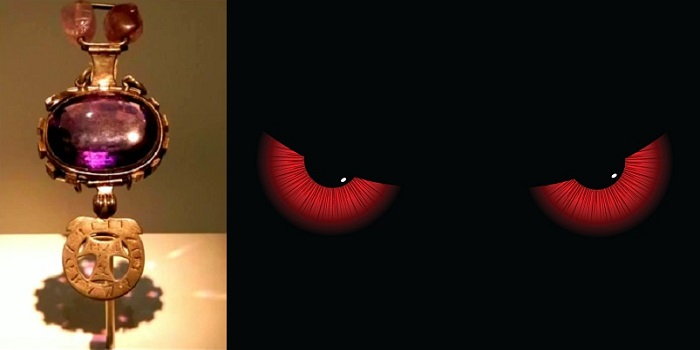Jewelry is designed to enhance the beauty of women, but at times, some of the gemstones used in this jewelry can be very mysterious and cursed too. This purple sapphire is one such mysterious and cursed gemstone that was kept for centuries in an ancient temple in Kanpur, India, the temple of Indra, the Hindu god of war and weather. Until this gemstone was present in the temple, it protected the villagers but after being stolen it became bad luck for the recipients. Because during the Indian Mutiny of 1857, a British soldier stole this gemstone and brought it to England.
It was taken to the UK by Colonel W. Ferris but thereafter he lost money and suffered from ill health. But this was not enough as his family suffered the same fate and many troubles began to befall them too. Because after receiving the Sapphire his family supposedly faced several financial and health problems as all the members fell prey to major diseases. But even after these misfortunate happenings, they were not able to connect these incidents with the Sapphire. Later, one of his family friends briefly took this sapphire from Ferris, but he soon committed suicide.
In 1890, the gemstone was acquired by Edward Heron-Allen, who was immediately beset by misfortunes after receiving it. Although he was a scientist and writer who did not believe in superstitions at all, but as he got this sapphire, a series of bad coincidences started with him. He twice gave the stone to friends who had asked for it - one seemed to suffer every type of misfortune and the other, a singer lost her voice and has never sung again. So they quickly returned the stone back to him, which made him believe that it was the curse of that gemstone.
After examining it thoroughly, he found that the sapphire was stained with the blood and the dishonor of everyone who has ever owned it. He revealed that the stone was actually under the curse of its owner. Heron had understood the powers of that Sapphire, so he kept it locked inside seven boxes and placed holy good-luck charms around it. He also left a warning note regarding the accursed history of the gem. After Heron's death, the stone was passed on to his daughter who donated it to the Natural History Museum, London in 1943, along with the letter that her father had written as a warning for future owners to handle it safely. Even today, the sapphire is on display as part of their collection of precious gemstones.


















0 comments:
Post a Comment